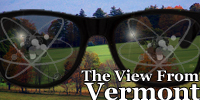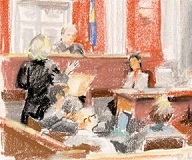Space nuclear propulsion: Humanity's route to the solar system
Part I: Space nuclear reactor safety
-3 2x1.jpg)
A message from Curtiss-Wright
High-Temperature neutron flux detectors for Generation IV reactors and SMRs
Part I: Space nuclear reactor safety
 When I am reading an article or a blog post, I always appreciate when the writer places the immediate events into a bigger context. I always try to do this myself. Putting Vermont Yankee issues in context, however, is like facing a huge mountain range. There is always another set of hills beyond this one. Which mountain? Which context? Where to start?
When I am reading an article or a blog post, I always appreciate when the writer places the immediate events into a bigger context. I always try to do this myself. Putting Vermont Yankee issues in context, however, is like facing a huge mountain range. There is always another set of hills beyond this one. Which mountain? Which context? Where to start?
The University of Nevada Las Vegas Student Section of the American Nuclear Society will host the 2012 ANS Student Conference on April 12-15, 2012, at the UNLV Student Union.
The Carnival of Nuclear Energy Bloggers is up at Next Big Future
Steven A. Arndt, Ph.D., P.E., cited as best engineer in federal service
A partnership with Oak Ridge National Laboratory will yield results for years to come
When I was a young girl, I fell in love with science and technology. I was intrigued by famous physicist and chemist Marie Curie and her pioneering research on radioactivity. I wanted to know how such a small piece of uranium could be turned into so much energy. And my curiosity about the nuclear plant that was being built about 50 miles from where we lived only grew as I reached my teens.
During the 2011 American Nuclear Society Winter Meeting in Washington, DC, a gathering of ANS members interested in social media and nuclear communications was held, with standing-room-only attendance. As the conversation went around the room, and people discussed their involvement in nuclear communications, a common thread held throughout: The participants felt a moral calling to advance nuclear science and technology through their work, and through their communications via social media. Most participants recounted an obligation that they felt to their community or their family, including the futures of their grandchildren.
Eric Loewen, president of the American Nuclear Society, kept up his rapid pace last week as he visited the ANS local section in Aiken, S.C., on February 15, and the one in Charlotte, N.C., on February 16. Loewen, as the featured speaker at the meetings of the two sections, presented his personal talk titled "Plutonium: Promise or Peril".
 Do you know someone who has worked tirelessly toward integrating young members into the American Nuclear Society? Do you know someone in the ANS Young Members Group who has demonstrated continued overall excellence in many areas? Now is your chance to nominate that person for national recognition of their efforts.
Do you know someone who has worked tirelessly toward integrating young members into the American Nuclear Society? Do you know someone in the ANS Young Members Group who has demonstrated continued overall excellence in many areas? Now is your chance to nominate that person for national recognition of their efforts.
Europe's biggest nuclear project is chopped down from five reactors to two
Discovery Channel seeks America's top inventors, machinists, and engineers to compete for a huge grand pr1ze
 On February 11, 1939, a Letter to the Editor titled "Disintegration of Uranium by Neutrons: a New Type of Nuclear Reaction" appeared in the science journal Nature. The letter provided the first theoretical explanation for the splitting of the atom, and coined a new term in physics: fission. The woman who co-authored the letter, and co-discovered the power of nuclear energy, is perhaps not quite as well-known as some of her contemporaries. Elise Meitner-how could hers not be a household name?
On February 11, 1939, a Letter to the Editor titled "Disintegration of Uranium by Neutrons: a New Type of Nuclear Reaction" appeared in the science journal Nature. The letter provided the first theoretical explanation for the splitting of the atom, and coined a new term in physics: fission. The woman who co-authored the letter, and co-discovered the power of nuclear energy, is perhaps not quite as well-known as some of her contemporaries. Elise Meitner-how could hers not be a household name?
 On January 19, the Federal District Court in Brattleboro, Vt., issued a court decision in favor of Entergy Corporation, regarding the continued operation of its Vermont Yankee nuclear power plant. Entergy had sued the State of Vermont on several issues, but mainly on Act 160, a Vermont law that was crafted to block the continued operation of the plant. The plant needs a Certificate of Public Good (CPG) from the state in order to keep operating, but Act 160 says that the state's Public Service Board needs legislative approval before it could release its findings on the application for the CPG. Without the new CPG, the plant would have had to shut down when the original one expires, on March 21, 2012. The federal court's decision "permanently enjoined" the state from using Act 160 to deny a CPG to Entergy; the basis for that decision is the supremacy of federal law over state law.
On January 19, the Federal District Court in Brattleboro, Vt., issued a court decision in favor of Entergy Corporation, regarding the continued operation of its Vermont Yankee nuclear power plant. Entergy had sued the State of Vermont on several issues, but mainly on Act 160, a Vermont law that was crafted to block the continued operation of the plant. The plant needs a Certificate of Public Good (CPG) from the state in order to keep operating, but Act 160 says that the state's Public Service Board needs legislative approval before it could release its findings on the application for the CPG. Without the new CPG, the plant would have had to shut down when the original one expires, on March 21, 2012. The federal court's decision "permanently enjoined" the state from using Act 160 to deny a CPG to Entergy; the basis for that decision is the supremacy of federal law over state law.
The Carnival of Nuclear Energy Bloggers is up at Yes Vermont Yankee
 Entergy's Vermont Yankee nuclear power plant's operating license would have expired on March 21, 2012, but the Nuclear Regulatory Commission extended the license to 2032. Vermont's legislature and a vocal part of the state's population don't like the idea of Vermont Yankee's continued operation. So, when confronted with an unpopular federal agency's decision, what's a concerned state legislature to do?
Entergy's Vermont Yankee nuclear power plant's operating license would have expired on March 21, 2012, but the Nuclear Regulatory Commission extended the license to 2032. Vermont's legislature and a vocal part of the state's population don't like the idea of Vermont Yankee's continued operation. So, when confronted with an unpopular federal agency's decision, what's a concerned state legislature to do?
By a 4-1 vote, the agency opens the door to $14 billion in new construction of two Westinghouse AP1000 nuclear reactors
This article is the first in a series of info-graphic presentations about nuclear energy. This graphic compares the energy density of nuclear to that of wind power.
Several weeks ago in the quiet community of Gaffney, South Carolina, I attended a public meeting held by the Nuclear Regulatory Commission to discuss the potential environmental impact of Duke Energy's proposed William States Lee III site. About 100 anti-nuclear activists also descended on the meeting.